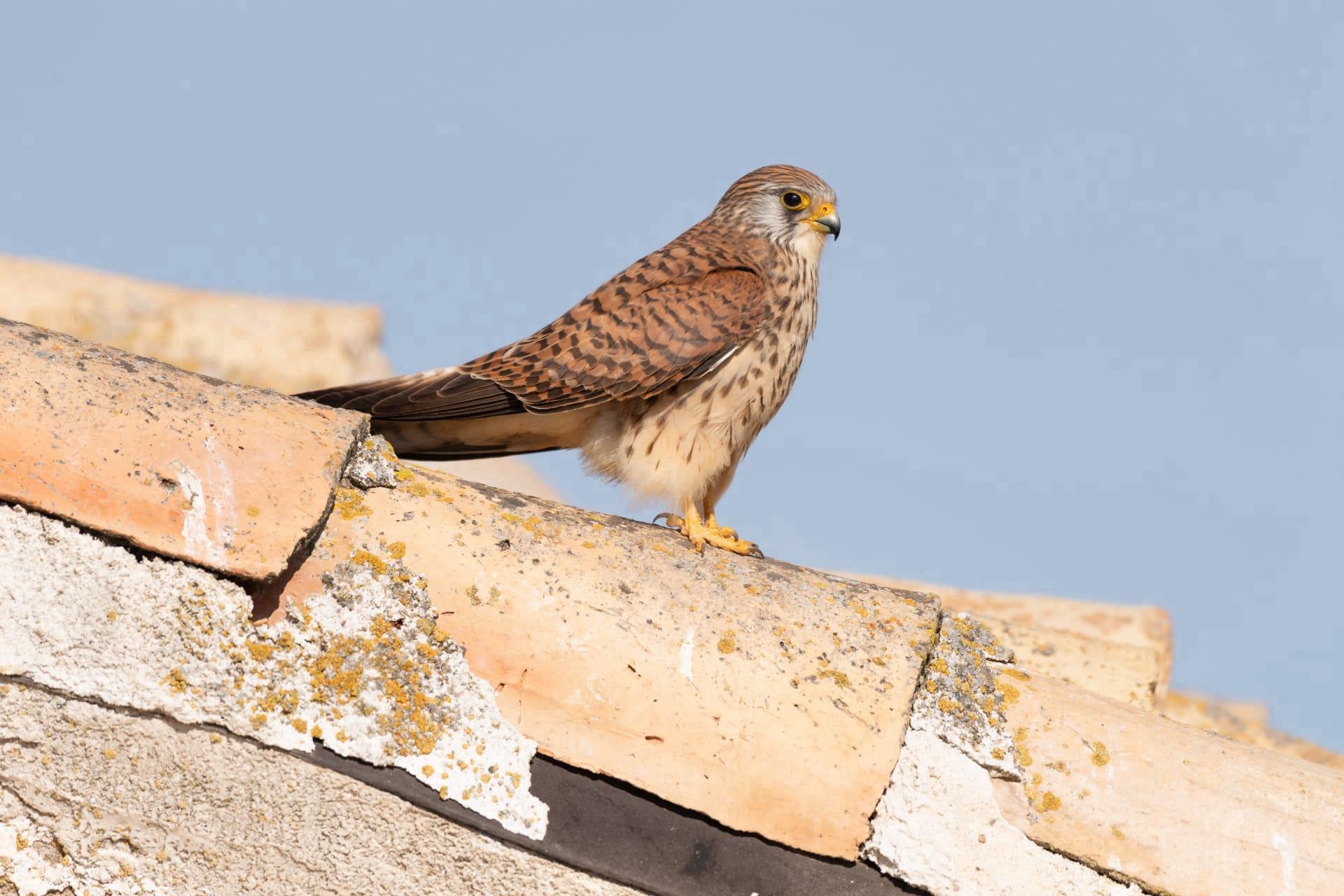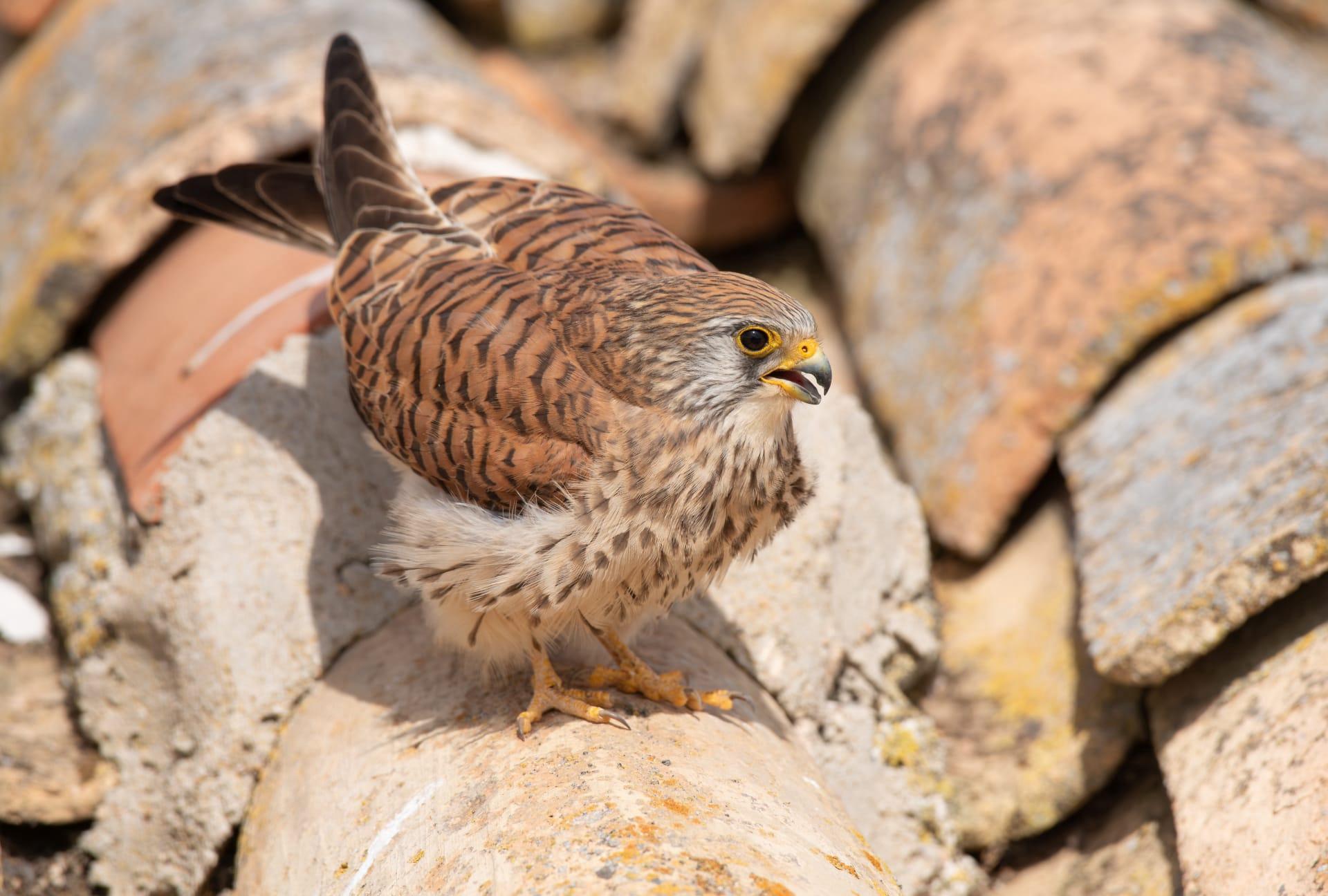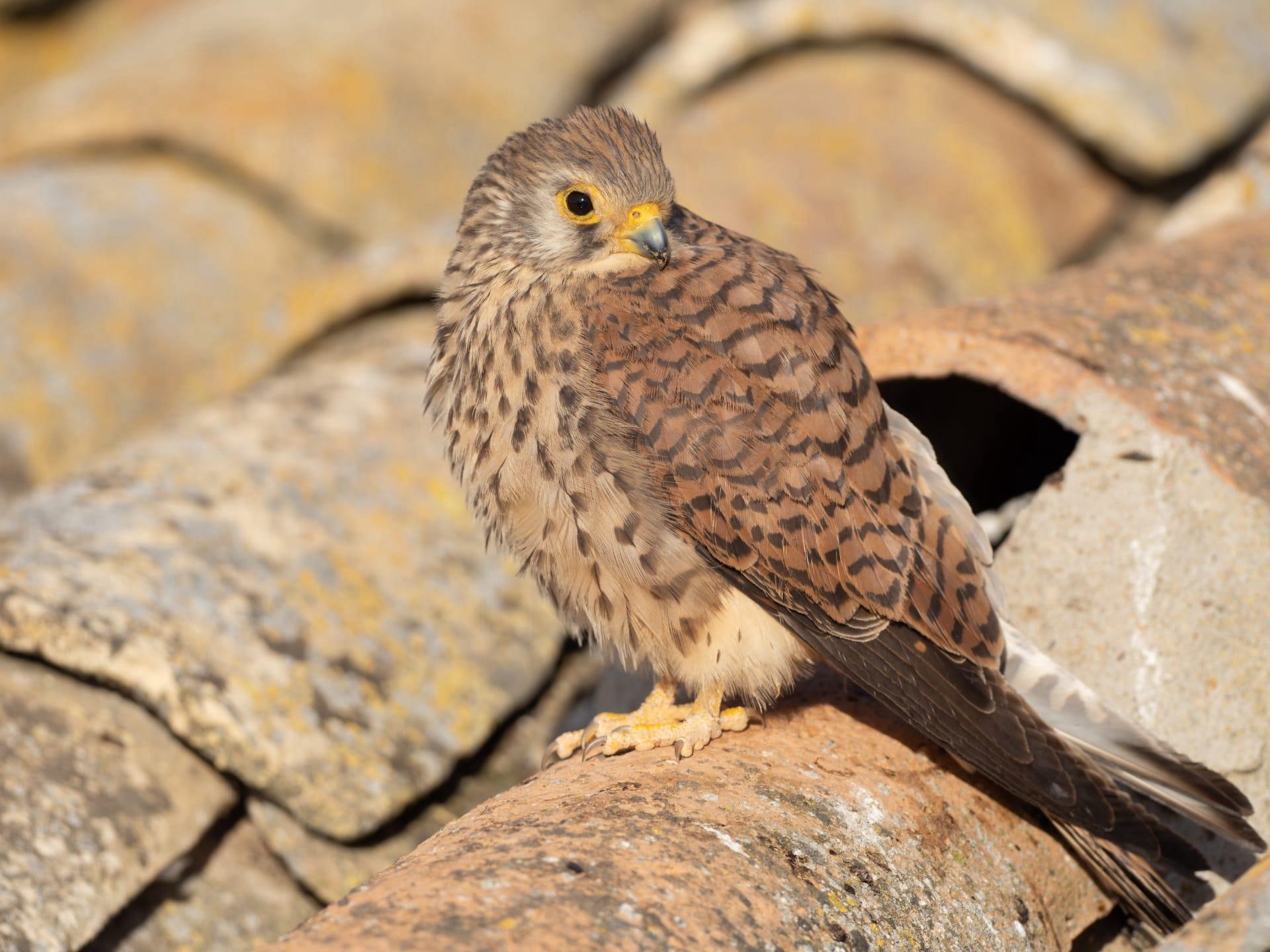Kestrel Trivia
- Home /
- Trivia Question /
- Animal /
- Kestrel Trivia
1
Question: What sets the Kestrel apart from other birds of prey in terms of hunting strategy?
Answer: Kestrels are unique among raptors for their "hovering" technique. Unlike other birds of prey that rely on surprise attacks from a perch, Kestrels can stay almost motionless in the air for several minutes using rapid wing beats and tail adjustments. This allows them to spot prey, like small mammals or insects, from up to 60 feet in the air. Once they've locked onto their target, they dive down at speeds of up to 30 miles per hour to snatch it.
Question: How do Kestrels adapt to different environments for nesting?
Answer: Flexibility is key for Kestrels when it comes to nesting. They don't build their own nests but rather repurpose old nests of other birds, or use natural cavities in trees, cliffs, and buildings. In urban areas, they often nest in crevices of buildings or other man-made structures. Kestrels are not picky about altitude either; their nests can be found from ground level up to 60 feet high, showing remarkable adaptability to varying environments.

2
Question: Is it true that Kestrels can't hunt in the rain?
Answer: This is a common misconception. While heavy rain can hamper their hunting efficiency, Kestrels are still capable of hunting in light to moderate rain. Their feathers are waterproof to a certain extent, which allows them to hunt in less than ideal weather conditions. However, prolonged or heavy rain can lead to a temporary decrease in hunting, as it becomes harder for them to spot prey.
Question: Do Kestrels mate for life?
Answer: Contrary to popular belief, Kestrels are not typically monogamous for life. They tend to form seasonal pair bonds, staying together for a single breeding season to raise their young. In the next season, they might find new partners. This strategy allows them to adapt to changing environments and conditions, ensuring greater genetic diversity for their offspring.

3
Question: How do Kestrels use ultraviolet (UV) light to hunt?
Answer: Kestrels have a unique ability to see ultraviolet light, which helps them track prey more efficiently. Many small mammals, like voles, leave trails of urine that reflect UV light. These trails are invisible to the human eye but light up like neon signs for Kestrels, guiding them directly to their prey. This extraordinary vision is a key factor in their hunting success.
Question: What's the average lifespan of a Kestrel in the wild?
Answer: On average, Kestrels live about 4 to 5 years in the wild, though some individuals can live up to 10 years. Their lifespan is influenced by various factors like predation, food availability, and environmental conditions. In captivity, with proper care, Kestrels can live slightly longer, up to 15 years.

4
Question: How do Kestrel populations indicate environmental health?
Answer: Kestrels are considered indicator species, meaning their population trends can reflect the overall health of their ecosystem. A decline in Kestrel numbers can signal environmental problems like pesticide use, habitat loss, or climate change. Conversely, a stable or increasing Kestrel population often indicates a healthy environment with a good balance of prey and suitable nesting sites.
Question: Can Kestrels really predict the weather?
Answer: It's not that Kestrels can predict the weather, but they are highly sensitive to atmospheric pressure changes. Before a storm or change in weather, Kestrels often adjust their hunting and flying patterns. They might hunt more aggressively before a storm to stock up on food, knowing that hunting conditions will worsen. This behavior can sometimes give the impression that they are predicting the weather.

5
Question: Do Kestrels have any natural predators?
Answer: Yes, Kestrels do face threats from natural predators, especially larger birds of prey like eagles, hawks, and owls. These predators can attack adult Kestrels or raid their nests for eggs and fledglings. Snakes and some mammals, such as raccoons and foxes, can also pose a threat to their nests. The presence of these predators necessitates Kestrels to be vigilant and often nest in locations less accessible to ground predators.
Question: What is the significance of a Kestrel's tail movements?
Answer: A Kestrel's tail movements are a vital part of its hunting and flying techniques. When hovering, Kestrels use their tails to stabilize and steer, adjusting to wind currents for optimum positioning. The tail also plays a crucial role during high-speed dives, helping them maneuver accurately towards their prey. These movements are so precise that they can adjust their angle of attack in mid-air with remarkable agility.